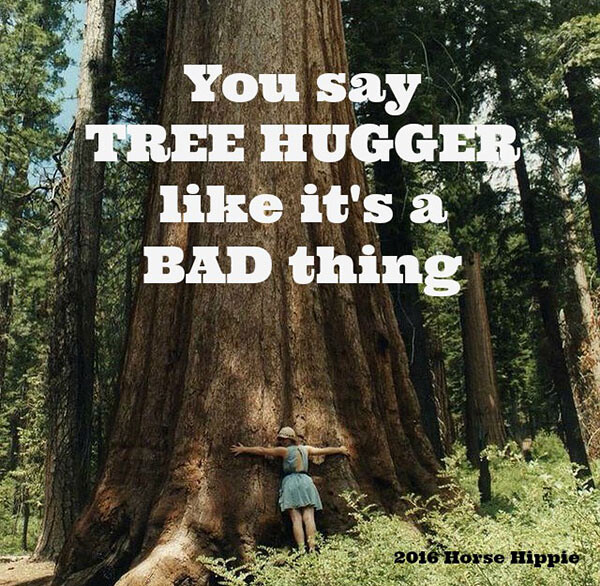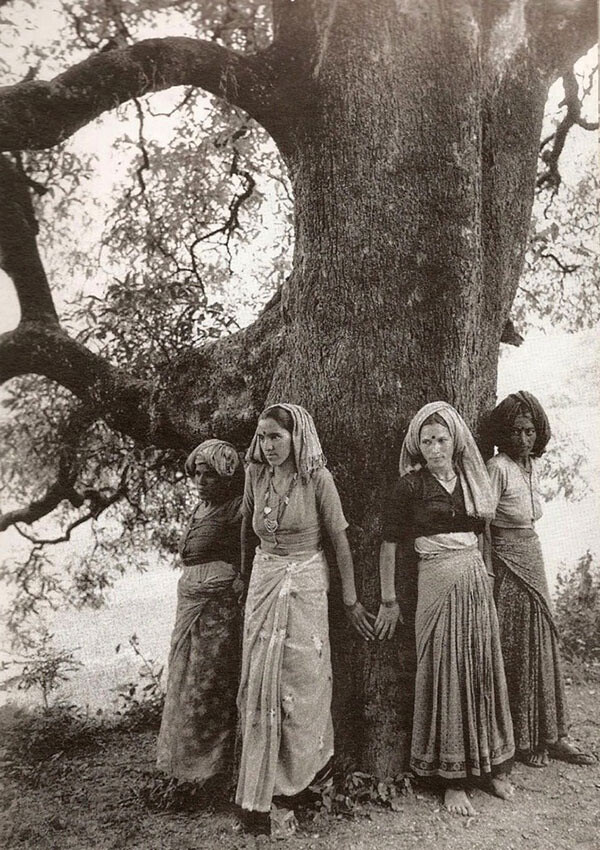1.
In The Human Condition in 1958, Hannah Arendt wrote a cautionary tale of two forms of alienation—from the earth (Gaia) and from the world (Cosmos)—that threatened to annihilate not merely some humans, not merely all humans, but to unleash an atomic holocaust on all life. In Arendt’s compressed social historiography, this dual alienation was the result of the slow transformation of the classic Greek understanding of the human condition (vita activa). For the Greeks, the human condition was based on three kinds of activity: labor (animal laborans), work (homo faber), and politics (zoon politikos). Arendt believed the modern understanding of the same had become based on and oriented to only one kind of activity—labor and its instrumental reason.
For Arendt, the Greeks had it right, the moderns wrong. The Greeks understood all matters of biological life—and thus life and death—to abide in the realm of labor. In this framework, labor is the relationship a person has to her body and the bodily functions of others. It is “the activity which corresponds to the biological process of the human body, whose spontaneous growth, metabolism, and eventual decay are bound to the vital necessities produced and fed into the life process by labor.”1 Labor operates on and addresses the world of necessity, of animal needs: placenta, shit, food, drink, shelter, pleasure, productivity, abundance—what Arendt calls the “burden of biological life, weighing down and consuming the specifically human life-span between birth and death” on the earth.2 Labor is what humans do to maintain, enhance, and reproduce life. This natality is its key figure, whether represented via Mother Earth nurturing life or animal mothers pushing out their offspring.
But the realm of necessity is merely the natural ground of the human condition. If labor operates in the realm of intimate biological functions and relations, work, the second aspect of the human condition, operates between the worker and her object. The worker has an idea and then attempts to reify it, materialize it, in a durable form. In doing so the worker “provides an ‘artificial’ world of things, distinctly different from all natural surroundings.”3 Arendt also notes, time and again, that the ultimate purpose of work is “to offer mortals a dwelling place more permanent and more stable than themselves.”4 Labor makes biological beings; work fabricates the world within which they dwell. But neither labor nor work defines the human condition. They are the grounds on which humans can express their truth through a third form of activity, namely, political action in the public sphere.
Many Arendtian scholars understand political action to be the opposite of labor. If labor focuses on the necessities of biological life and intimate desires and passions, they believe political action is possible only when these concerns are radically bracketed and held at bay. For Arendt, “the human capacity for political organization is not only different from but stands in direct opposition to the nature association whose center is the home (oikia).”5 As opposed to the labor of the home, the political action that defines the public sphere doesn’t produce a baby, a person, or a life. Political action discloses who someone is—not directly but implicitly, as the person and those around her come to know who she is relative to the mode, timing, and ordering of her speech and action. “The disclosure of ‘who’ in contradistinction to ‘what’ somebody is … is implicit in everything somebody says and does.”6 In short, the public sphere of political action operates openly in a shared common world where the exchange of ideas occurs “directly between men without the intermediary of things or matter”; “corresponds to the human condition of plurality, to the fact that men, not Man, live on the earth and inhabit the world”; and is oriented toward immortality.7
Did you stand up to a racist comment or not? Were you willing to sacrifice your life for the common good of your people or not? Did you invest all your energies into advancing a better idea of political publics or not? In its most robust sense, each individual action has within it the possibility of becoming a world-historical action. If the scope of your action is large enough, no one will ever forget your name. You will become immortal through the forms you instituted.
Leave aside for the moment the meaning of immortality for Arendt, and note instead her distinction between “on the earth” and “inhabit the world.” This duality is expressed in multiple ways across the text. On the one hand, we are on or of the earth, as mortal individuals; we live within the rhythms of life, needing to constantly sustain our bodies. This natural state is an unavoidable and necessary precondition to the human condition. But it is only a precondition. To be human, Arendt claims, is to inhabit a world. And because this world must be made, this world can also be unmade and remade. And it is the unmaking of her beloved Greek polis and the catastrophic consequences she saw coming—the nuclear destruction of the earth—that motivated Arendt’s compressed and fragmentary social history contained in The Human Condition.
In order to explain how we got from the classic world of the Greeks to the current world, Arendt tells a story that goes something like this. In the beginning were Mother Earth (Gaia) and Father Sky (Uranus), who together birthed a cosmos—a world—for the Greeks. This world parceled human activities among different kinds of people—the realm of necessity (labor) was assigned to women, children, and slaves; the realm of work to a class of male citizens without property or sufficient property to sustain themselves and their families without work; and the realm of politics to those men who were wealthy enough to have others take care of their necessities and fabricate their world. Over time, those assigned to this labor denounced the world as a false place and retreated to philosophical solitude (vita contemplativa). In the Christian era, God the Father, a Son born of a Virgin, and a Holy Ghost smuggled into this situation of falseness an attitude of fallenness that viciously turned Christians against the flesh even as they promised life everlasting in/after death. Their followers lifted their voices to Heaven, singing forward to the end-times. When the end didn’t come, the Christians institutionalized an attitude that rejected the earth as a false and fallen place and prayed for a new kind of infallible heavenly body.
Next, in the Enlightenment era a struggle for emancipation ensued between those, such as Kant, who desired to think independently about earthly things, and the various Christian sects who claimed power to determine the moral passageway between life and death. Science emerged from the Kantian Enlightenment as a liberated child. Having emancipated earthly beliefs and secularized earthly practices, the natural and social sciences sought to understand the material dynamics of the earth and universe and the societal dynamics of man. Science zoomed into the molecular and stretched outward to the interstellar. If scientists prayed, they prayed for insight into the truth of life processes or for a more productive form of life. Science invented labor-power and biopolitics. It produced treatises, governmental documents, and social movements that figured the human condition as a biological, geological, cosmological journey of life and death.


A woman works on a ‟Vengeance” dive bomber at Vultee-Nashville, Tennessee, c. 1939. Photo: Alfred T. Palmer
For Arendt, all these events were forms of action that had unexpected consequences, which is in the nature of action itself. “Action, though it may proceed from nowhere, so to speak, acts into a medium where every reaction becomes a chain reaction and where every process is the cause of new processes.”8 History is thus a cascade of actions that lead to right or wrong turns that ignite other chain reactions that cannot be anticipated, controlled, or reversed. And every action, she said, is folded into how people work—the things they make; the reason they make them; and ultimately the world in which humans dwell. Sometime during the rise of industrial capitalism her moderns began fabricating durable, then semi-durable, then disposable things to be consumed and shat out. In the end the moderns fabricated earth and worlds (cosmos)—the social relations of capitalism, poetry and art, politics, instruments and machines—in such a way that all forms of activity were subsumed into the logics of labor, biology, and necessity. Everything started working for the Great Mother Womb or against the Great Mother Womb; everything became oriented to using the earth for the accumulation of a materially richer life. The human condition was eventually reduced to biology, action to biopolitics.
The moderns fabricated for so long and so extensively that the very fabric of earth and world was now part and parcel of food and toilet. They created the environmental conditions that altered the very nature of their material existence, to paraphrase Marx, as skies were clogged with smog, famine spread, and vast toxic dumps boiled over. Up above, Sputnik swirled, shaping viewers’ understanding of the earth as a limited thing that all humans shared. But the more they treated the earth with concern, the more earth itself became just another object to instrumentalize existence, as if the earth were just another object to consume or not consume, as if consumption were the only way to view each other and the planet. The earth had become the Greek woman and slave, whose truth is assigned to her ability to keep on giving without ever becoming exhausted. Perhaps, we thought, we should find other earths revolving around other stars to begin our ravenous consumption anew.
It was against the shadow of these changing social configurations and the worlds they bore that Arendt warned of a coming atomic firestorm. She asked: “Should the emancipation and secularization of the modern age, which began with a turning-away, not necessarily from God, but from a god who was he Father of men in heaven, end with an even more fateful repudiation of an Earth who was the Mother of all living creatures under the sky?”9
You might think Arendt’s vision of earth consumed by nuclear fire would orient her toward heaven, or to outer space, perhaps hanging out her thumb for a ride on Sputnik to Mars—or maybe picking up a shovel and digging a luxurious bunker where she could wait out the end-times, reading ancient Greek classics. But you’d be wrong. Her argument was that the reflex to flee was a symptom of the problem rather than a solution to it. All three forms of world—Christian eschatology, pure science, and biopolitics—set their sights on life, death, birth, and mortal health or corruption, whether from the perspective of the universe, the species, or the individual. In dangerously misunderstanding the human condition as primarily about life and death, all three were accelerating the crisis.
Arendt believed that no one can escape the human condition through a retreat into solitude or an escape to heaven or the stars, because the human condition is not found in individual solitude, in life and death, or in the after- or everlasting life. The desire to rush away from the earth in order to survive it is exactly what placed moderns on the precipice of total annihilation. If we are to save our lives, Arendt argues, we must turn back to world and earth, but not back to life (labor) or the hope for bodily resurrection (a form of life cleansed of bodily decay). We must leave the obsession with mortality and strive to become immortal, to stay in the world in a way begat by activity independent of the labor of the mother and the law of the father. We need to act in such a way that we make ourselves legend. We need to understand the human condition itself as a form of political action oriented to the common good and enacted “through words and persuasion and not through force and violence.”10
At this point, Arendt makes a specific philosophical judgment about what sort of world humans must dwell in if they are to avoid the firestorms resulting from earthly and worldly alienation. This world demands we separate the public sphere from the realm of labor and work. But we don’t do anything. Only certain kinds of people and certain forms of existence are allowed to decide their destinies through persuasion rather than hegemony, force, and violence. Other bodies are assigned to the labor of necessity—wiping up poop, lovingly scooping food into children’s mouths, laboring in mines and factories, left at the edges of roads and cities to fend for themselves—as if it were the truth of their being or a fact of nature. For the Greeks it was women and slaves, for capitalism the proletariat and precariat, for imperialism and colonialism persons of color, indigenous peoples, and of course earth herself. This type of labor can leave one exhausted. It can even lead to a hope for death. Christianity, as Hegel said, was the god of exhausted slaves.
Who will be assigned this burden of necessity today? As Arendt notes, we cannot reverse the cascading effects of political action. We now live in a world in which assigning certain classes of persons to bear the burden of maintaining life is no longer, if it ever were, politically viable. Enter the machines. The cybernetic technicians at the control panels of military-mediated techno-science reassured the world that soon machines would be able to think, and in thinking solve the problems of labor and life. In a 1964 lecture at the Conference on the Cybercultural Revolution, Arendt took aim at several assumptions within the cybernetic community.11 One of the great benefits of cybernetic machines that engineers touted was the liberation of humans from labor and the creation of a world of endless leisure. Computer automation promised to take over fabrication. With its utopian and dystopian visions, cyberpunk soon began imagining a world run by machines, exemplified in Philip K. Dick’s Do Androids Dream of Electric Sheep? (1968).
All Arendt could see was a coming hell of endless nothingness. “Vacant time is what it says: it is nothingness, and no matter how much you put in in order to fill up this nothingness, this nothingness in itself is still there and present and may indeed prevent us from voluntarily and speedily adjusting ourselves to it.”12 The leisure afforded by cybernetics, she thought, would simply accelerate the subsumption of the human condition into the logics of labor. Ditto with the new environmentalism and animal rights movements—in an effort to place humans into a broader environmental ethics, these movements reduced humans to a pure biology. Only if cybernetics managed to free all persons from necessity so that they could enter the political realm—similar to how the Greeks had liberated certain men from necessity by locking up women and enslaving other people so that men could act politically—could it enhance the human condition. Then it could help moderns step back from the precipice of a great catastrophe. In this view, machines would be the new woman, slave, colonized person, and subaltern subject. Robots would speak Greek, in the sense that they could be assigned the labor of necessity as if it were in their nature to do so. Thus we should not be surprised today that the voice of current AI programs like Siri sound like the fantasy girlfriend of the (likely male) code-writer. She keeps giving and giving and never turns her back. Robots seem perfect for this role, insofar as they are on the other side of Life for Arendt: not merely dead but essentially Nonlife; not merely world-poor but world-absent. Isaac Asimov’s I, Robot had something to say about this future for robotics.
If robots can fall out of the moral realm, it is because the materials they are built from—the magnesium crucial to making steel, the rare earths, the polymers of plastics—have never been allowed in. And excluded with them is anyone who understands a different ontological relationship between land and people. Like Arendt, the Australian Goenpul theorist Aileen Moreton-Robinson discusses an irreducible immortality at the root of her people’s condition. But this immortality is established by ancestral beings, “creatures of the Dreaming who moved across country leaving behind possessions which designate specific sites of significance … metamorphosed as stone or some other form.”13 The “inter-substantiation of ancestral beings, human and land” is the original “ontological relationship” through which all embodiment emerges.14
Alongside the Greek cosmos are other dwellers of world and earth—Dene, Sioux, Ogoni, Karrabing, and so many others. For them, the catastrophe Arendt warns against has already happened—it resulted from the geontological presumptions that invaders brought with them and fabricated their governance out of. The cascading effects of colonization were just now creeping up on Arendt’s moderns. Maybe the problem wasn’t letting the animal laborans take over and transform the rationale of politics, but rather thinking that someone or something has to be assigned the role of providing the biological conditions of someone else’s life—that someone must do labor and be the milk for me—and that someone or something can be found to play that role without harm.


Gaia (New Earth), the DC Comics superhero character, in Aquaman, vol. 5, no. 6 (February 1995).
2.
Ancient Greece is the comfort blanket for Arendt’s moderns and their legatees. Whenever in crisis, they reach toward it for support. Like toddlers reaching toward their mother’s breast when feeling unsafe, they wrap their lips around the logos of classical men. Pick me up. Fix it. The sounds of the words are comforting as they blend into the words they already had given their actions and institutions: demos, logos, nomos. As her grandchildren rip into her flesh and shit in her belly, Gaia herself seemed to stretch her hands to the Sky Father and pray: “Anything Lord, anything but this.” Many now run to her defense. Gaia: ignoring Arendt’s caution, theorists call out her name as object and subject of care. In the 1970s James Lovelock and Lynn Margulis, and more recently Bruno Latour, used Gaia to think through a looming global environmental catastrophe. But most prominently there was the anthropologist, cyberneticist, psychologist, and morphologist of being Gregory Bateson. By 1979 Bateson was proposing “the biosphere” as a technical name for Gaia, the two terms interchangeable for him, both meaning the highest order of mind and life.15 But in giving Gaia a new name he not only rejected Arendt’s caution, he also rejected another possible way of understanding the interconnections governing existence, namely, the colonial sphere. In choosing the concept of the biosphere, he disclosed the manner in which Western epistemology governs difference.
Bateson had a very specific understanding of what mind was, and thus what criteria had to be met before one could say one was in the presence of it. Difference and relevance were key, or what he called a “difference that makes a difference” (or second-order difference) to another mind. In other words, mind was not a solitary thing, a sovereign substance, or a unified self.16 Mind is the process of incorporating difference (information) as a kind of difference. Bateson describes this process in many ways, including “stimulus, response, and reinforcement.”17 The core dynamic of mind is this: the mind creates a meta-pattern that is able to reconcile what it is with the difference it encounters. It then becomes this new pattern, in effect ingesting into itself a modified version of itself as altered by the difference. Indeed, mind feeds on the information (difference, noise, chaos) it encounters by classifying (transforming) it into an ingestible form, which alters itself without exploding itself.
For Bateson mind, life, and evolution are, thus, simply three words that refer to the same thing. As he says, time and again, across his books Steps to an Ecology of Mind, Mind and Nature, and A Sacred Unity that the evolution of mind (map, meta-pattern) is the core of what we consider life to be. It is what holds “us” in relation to “ourselves” at a given level of bios against the noise of the territory. Bateson believed that defining life/mind in this way allowed him to puncture the dangerous Enlightenment chauvinism that removed the human mind from other parts of nature. Instead, for Bateson, the human mind was merely one region of a much larger biospheric mind, a part of a larger play of life forces partaking in difference, relevance, and self-correction. Thus not only is the “individual mind” immanent in the body. “It is immanent also in pathways and messages outside the body; and there is a larger Mind of which the individual mind is only a subsystem. This larger Mind is comparable to God but it is still immanent in the total interconnected social system and planetary ecology.”18 Sounding as loud an alarm as Arendt but grounded in an entirely different life of the mind, Bateson argued that if the West failed to devise a new ecology of mind, a general ecological collapse threatened all life on earth:
Let us now consider what happens when you make the epistemological error of chasing the wrong unit: you end up with the species versus the other species around it or versus the environment in which it operates. Man against nature. You end up, in fact, with Kaneohe Bay polluted, Lake Erie a slimy green mess, and “Let’s build bigger atom bombs to kill off the next-door neighbors.” There is an ecology of bad ideas, just as there is an ecology of weeds, and it is characteristic of the system that basic error propagates itself. It branches out like a rooted parasite through the tissues of life, and everything gets into a rather peculiar mess. When you narrow down your epistemology and act on the premise, “What interest me is me, or my organization, or my species,” you chop off consideration of other loops of the loop structure. You decide that you want to get rid of the by-products of human life and that Lake Erie will be a good place to put them.19
The reference to Kaneohe Bay would have been well known to Bateson’s readers. The bay was a case study of the effects of the common practice of dumping raw sewage into rivers, bays, seas, and oceans in the late 1960s. Lake Erie, so heavily polluted by industrial contaminates from the Cuyahoga River that flows into it, caught fire, helping spur the environmental movement. The toxic consequences of toxic liberal capitalism were hardly contained to one beach and bay. Eighty people died in New York City in 1966 when the temperature rose, intensifying smog.
And yet, to Bateson, the Cuyahoga River was not itself a mind. Indeed, many things fell outside of Bateson’s category of mind—stones, manganese, water, telescopes, and windup toys. “There are, of course, many systems which are made of many parts, ranging from galaxies to sand dunes to toy locomotive,” but these are not “minds,” nor do they “contain minds or engage in mental process.” “The toy locomotive may become a part in that mental system which includes the child who plays with it, and the galaxy may become part of the mental system which includes the astronomer and his telescope.”20 Yet, without the child and astronomer, they are merely things in the world, rather than world-rich in themselves.
What, then, of those peoples who do not consider rocks, rivers, and sand dunes as without mind—those I mentioned above, such as the Goenpul, Dene, Sioux, Ogoni, and Karrabing but also the Native American Seneca, who belong to Cuyahoga? And what of the Papua New Guinea Sepik River peoples and those residing in the Balinese village of Bajoeng Gede, among whom Bateson lived in the 1920s and ’30s, and among whom he developed his key concepts of schismogenesis and the double bind? Where did Bateson place them in his ecology of mind? Biographies note the initial frustration Bateson experienced during his Papuan fieldwork in the 1920s.21 Originally a student of zoology, Bateson shifted to social anthropology under A. C. Haddon, who urged him to study contact between the indigenous Sepik groups in Papua New Guinea and their Australian colonial administrators. After being excluded from the secret ceremonies of one group and after deciding that another was too culturally contaminated, he shifted his attention to the Sepik River Iatmul. Later, with Margaret Mead, he studied the social relations of Bajoeng Gede Balinese.


Image origin unknown, 2016.

The Chipko movement was a forest conservation movement born in India with precedents in the eighteenth century.

The Chipko Movement resurfaced in its modern version, led by women, in 1973 in Uttarakhand (then Uttar Pradesh). It’s movement members hugged trees to block deflorestation.

Elizabeth Stephens and partner Annie Sprinkle, well-known advocates of ecosexuality, defend a more mutual and sustainable relationship with the Earth” that is based on relating to nature not as a nurturing mother but as a life partner.

Press image for the immersive theater experience “Ecosexual Bathhouse” by Pony Express (led by playwright and performance maker Ian Sinclair and transdisciplinary artist Loren Kronemyer). Photo: Matt Sav
For Bateson, Sepik and Iatmul and Balinese men and women were certainly not windup toys. For him, they aspired to be more like rocks. They sought not to evolve. “The rock’s way of staying in the game is different from the way of living things. The rock, we may say, resists change; it stays put, unchanging. The living thing escapes change either by correcting change or changing itself to meet the change or by incorporating continual change into its own being.”22 Although he purported to study change resulting from contact, he ultimately desired to find authenticity, which he considered that which had not changed. More accurately, he sought out those who resisted the onslaught of colonialism and then he characterized this active political resistance as a form of unchanging stasis. The role these people played in Bateson’s ecology of mind was classically colonial. They provided him a form of difference that would energize his own internal unfolding. In continually encountering distinct regions of mind (among them the Iatmul, the Balinese, US military intelligence, Western science and epistemology, new age ecology), he enriched himself with the selves of others. He became Hegelian, the mind that actualized Geist by understanding the meaning of Napoleon’s cannons at the gates of Jenna.
I am being a tad unfair. Bateson was more humble than Hegel. He claimed knowledge could never be actualized, because mind was founded, as Deleuze would later put it, on original multiplicity.23 Still, the itinerary of Bateson’s historiography of mind followed the rhetoric of Western civilizational self-aggrandizement. The great Martiniquan Aimé Césaire agrees with Bateson’s belief that contact between civilizations is what keeps each from atrophying. But he quickly and searingly mocks Bateson-like ideologues—all those who see Western knowledge as emerging from a benign encounter with difference. Europe’s “great good fortune,” Césaire sarcastically writes, was “to have been a crossroads, and that because it was the locus of all ideas, the receptacle of all philosophies, the meeting place of all sentiments, it was the best center for the redistribution of energy.”24
In his 1990 Poetics of Relation, another Martiniquan, Édouard Glissant, compares the worlds of invading Christendom with the worlds they encountered, according to their differing forms of nomadism. In the “circular nomadism” of people such as the Arawak, hired laborers, and circuses, when “each time a portion of territory is exhausted” they move on to a new place, only to come back when it has regained its resilience. By contrast, the goal of invading nomads was not to allow a place to replenish itself but “to conquer lands by exterminating their occupants. Neither prudent nor circular nomadism, it spares no effect. It is an absolute forward projection: an arrowlike nomadism.”25 Eventually the invaders begin settling down, rooting in, claiming hold, and forcibly moving others into their fortresses via the dark, diseased holds of slaving ships. The invaders’ descendants begat descendants, who eventually realized they had shat where they were now going to eat, and so created new exterior and interior toilets. They sent toxic forms of manufacturing into interior reserves of difference—native lands; regions dominated by persons of color and the poor—and external third worlds.26
In short, the good fortune of Europe and its progeny came not from an advanced ecology of mind, as Bateson suggested, nor from the perversion of a Greek understanding of the human condition, as Arendt would have it. It came from its parasitical relationship to others. The scrabble of competing kingdoms of Western Christendom rampaged across what they called new worlds, as if the worlds were part of a gargantuan female body, ripe for the taking and easily disposable when used up. They carried Greek lexicons as they invaded land after land, justifying their savagery in classical terms, then settling down into a demos which claimed within it “a hierarchy of logical types immanent in the phenomena.”27
As Hortense Spillers noted long ago, this cosmos is more legible in an American rather than Greek grammar.28 Thomas Jefferson, erudite scholar of the classical world and slave owner, parsed out hierarchies of flesh and bodies by differentiating between the social (indigenous) and ontological (African) savage.29 This uniquely American grammar reveals how the American demos was built by sorting non-Europeans into the orders of the world-absent and world-poor, the rocks which could be treated as mere objects versus the animals who simply had not yet become fully civilized—those of mere flesh and those with a body.
Europe used its cosmos to justify sinking its teeth into worlds of others and sucking out whatever resources were available until it swelled into a blood balloon. Blood balloons became nations. Their people (demos) became Americans, Australians, Canadians, New Zealanders, English, French, and Germans. Europe did not simply create what Césaire’s student Frantz Fanon would famously call the Wretched of the Earth. Europe created itself through the parasitical absorption of others. “The Wealth of the West was Built on Africa’s Exploitation,” notes Richard Drayton, and also on the exploitation of South Asia, the Pacific, and the Americas.30 Immortality was based on the biggest killing, otherwise known as wealth accumulation. And Europeans did not only drain the labor and life energies of bodies and lands; they also sacked ideas.31 Césaire writes:
What, fundamentally, is colonization? To agree on what it is not: neither evangelization, nor a philanthropic enterprise, nor a desire to push back the frontiers of ignorance, disease, and tyranny, nor a project undertaken for the greater glory of God, nor an attempt to extend the rule of law. To admit once and for all, without flinching at the consequences, that the decisive actors here are the adventurer and the pirate, the wholesale grocer and the ship owner, the gold digger and the merchant, appetite and force, and behind them, the baleful projected shadow of a form of civilization which, at a certain point in its history, finds itself obliged, for internal reasons, to extend to a world scale the competition of its antagonistic economies.32
The shadow the invaders cast, the timing and character of their actions, disclosed the truth about their civilizational claims. Europeans before Europe viewed other lands as rich territory to be forcefully acquired, exploited, and then discarded. Hard, vicious work (homo faber) fabricated and refabricated multiple worlds and earthly terrains. But acknowledging the power of invader history is different than imagining that invaders had superpowers. As their minds and institutions were formed by gulping the difference they encountered, difference often got stuck in their throats. They choked. Writing almost simultaneously, Césaire and Arendt located the conditions of the Holocaust of the Second World War in the sadisms of imperial and colonial Europe. We can easily see that a similar tide of toxicity is now turning back to Northern shores. The Wretched of the Earth have pulled many “immortals” from their pedestals. Still, those left in the wake of various forms of colonialism and postcolonialism struggle with the impossible possibilities that characterize the aftermath—the math of an after that is ongoing.33
Hannah Arendt, The Human Condition (University of Chicago Press, 1958), 7.
Arendt, Human Condition, 119.
Arendt, Human Condition, 152.
Arendt, Human Condition, 152.
Arendt, Human Condition, 24.
Arendt, Human Condition, 178.
Arendt, Human Condition, 7.
Arendt, Human Condition, 190.
Arendt, Human Condition, 2.
Arendt, Human Condition, 26.
“Arendt’s 1964 Lecture on Cybernetics” →.
“Arendt’s 1964 Lecture on Cybernetics.” See also Brian Simbirski, “Cybernetic Muse: Hannah Arendt on Automation, 1951–1958,” Journal of the History of Ideas 77, no. 4 (2016): 589–613.
Aileen Moreton-Robinson, “Senses of Belonging: How Indigenous Sovereignty Unsettles White Australia,” ABC Religion and Ethics, February 21, 2017 →. See also Glen Coulthard, Red Skin, White Masks: Rejecting the Colonial Politics of Recognition (University of Minnesota Press, 2014).
Aileen Moreton-Robinson, “I Still Call Australia Home: Indigenous Belonging and Place in a White Postcolonizing Society,” Uprootings/Regroundings: Questions of Home and Migration, ed. Sara Ahmed (Berg Publishing, 2003), 23–40, 32.
Gregory Bateson, Mind and Nature: A Necessary Unity (E. P. Dutton, 1979).
“The interaction between parts of mind is triggered by difference, and difference is a non-substantial phenomenon not located in space or time; difference is related to neg-entropy and entropy rather than energy.” Bateson, Mind and Nature, 102.
Bateson, Mind and Nature, 134. Six aspects of Bateson’s definition of mind are key: “A mind is an aggregate of interacting parts”; “the interactions between parts of mind is triggered by difference; mental process requires collateral energy; mental process requires circular (or more complex) chains of determination”; “in mental process, the effects of difference are to be regarded as transforms (i.e., coded version) of events which preceded them”; and “the descriptions and classification of these processes of transformation disclose a hierarchy of logical types immanent in the phenomena.” Ibid, 92.
Gregory Bateson, Steps to an Ecology of Mind (Ballantine Books 1972), 467.
Bateson, Steps to an Ecology of Mind, 492.
Bateson, Steps to an Ecology of Mind, 94.
David Lipset, Gregory Bateson: Legacy of a Scientist (Prentice Hall, 1980).
Lipset, Gregory Bateson, 103.
Gilles Deleuze, Difference and Repetition, trans. Paul Patton (Columbia University Press, 1994).
Aimé Césaire, Discourse on Colonialism (Monthly Review Press, 2001), 34.
Édouard Glissant, Poetics of Relation (University of Michigan Press, 1997), 12.
Rob Nixon, Slow Violence and the Environmentalism of the Poor (Harvard University Press, 2013).
Bateson, Mind and Nature, 92.
Hortense Spillers, “Mama’s Baby, Papa’s Maybe: An American Grammar Book,” Diacritics 17, no 2 (1987): 64–81.
Thomas Jefferson, Notes on the State of Virginia (Penguin Classics, 1998). See Christina Sharpe, In the Wake: On Blackness and Being (Duke University Press, 2016), 78.
Kapil Raj, Relocating Modern Science: Circulation and the Construction of Knowledge in South Asia and Europe (Palgrave MacMillan, 2007).
Césaire, Discourse on Colonialism, 32.
Sharpe, In the Wake, 105.

